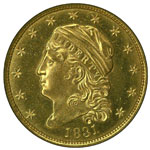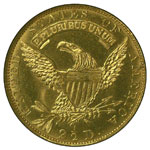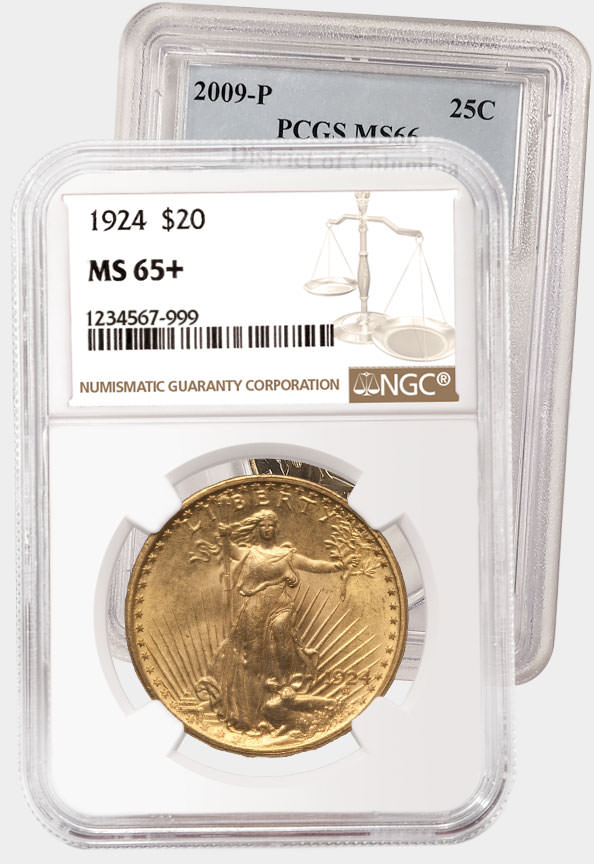
Grading Capped Bust $2.50 (1808-1834)

|

|
| Click to enlarge | |
Three distinct types of quarter eagles were coined between 1808 and 1834, but the rarity of these pieces has meant that the type collector will usually seek only a single piece to represent the entire span. John Reich's half eagle design of 1807 was adapted to its smaller brother the following year, and the 1808 quarter eagle proved to be a one-year-only type coin. When again issued in 1821, this denomination featured Robert's Scot's interpretation of the Reich design. Coined intermittently through 1827, this type was modified by William Kneass in 1829 to take advantage of the new close-collar technology. In its final form, the Capped Bust quarter eagle was minted until August 1, 1834, when the reduced weight authorized by Congress caused this coin type to give way to the Classic Head design.
In no year of its production did the Capped Bust quarter achieve a mintage of 10,000 pieces. More typical were figures of 2,000-4,000 coins per date. Since these coins were overweight by international standards, most were quickly shipped overseas as just so much bullion and were there melted and recoined by other nation's mints. Examples in any grade are rare, though mint state pieces form an unusually large percentage. These survivors were probably presented as holiday gifts, a tradition that lasted as long as this denomination was in production and actually provided the primary reason for its continued minting after about 1880.
The 1808 quarter eagle is a great rarity in any grade. Scholar Walter Breen estimated that between 35 and 40 survive in all. All examples seen have peripheral weakness and very narrow rims, a flaw that contributed to their rapid wearing. Since these coins experienced relatively little actual circulation, examples are seldom seen in grades below Very Fine.
Somewhat more available is the type issued from 1821 through 1827. In addition to those two dates, others include 1824/1 (all 1824 quarter eagles are overdates), 1825 and 1826/5 (though its overdate status is disputed, I believe it to be one). None of these issues are common, with just a few dozen known of each (fewer still for the 1826/5). The most often encountered dates are 1825 and 1827.
Most coins of this type are weak at their centers, though they're otherwise sharp. Contact marks, when seen, tend to be very small. While a disproportionately high number of survivors are uncirculated, most have subtle abrasions in their fields that keep them from achieving high grades within the mint state categories. Light cleaning is common, though it's typically not bothersome enough to prevent a coin from being certified.
When the quarter eagle was adapted to coining within a close collar, it permitted the production of coins having uniform diameters. Unlike earlier issues, with their shallow, denticulated borders, the quarter eagles of 1829-34 have a circle of beads within a raised rim. This provided for better wearing quality, though most coins of this type saw little actual circulation. The majority have survived uncirculated, though their overall numbers are still very small.
The most often seen dates are 1830, 1831 and 1832. While a few isolated gems are known, far more typical are coins in the range of AU-58 to MS-62. The 1834 issue is a great rarity. Made obsolete by the new standard enacted that year, most were melted at the mint. Coins of this type are usually well struck and faintly prooflike, a not unusual situation given their very low mintages. The 1830 and 1831 pieces are the ones most consistently well struck and are most likely to make good type coins for your collection.
From One to Seventy originally ran in The Numismatist, official publication of the American Numismatic Association (www.money.org)
Enjoy the article? Use the bookmark tool to save or share it.
![]()
Return to the Coin Grading Guide - From 1 to 70
